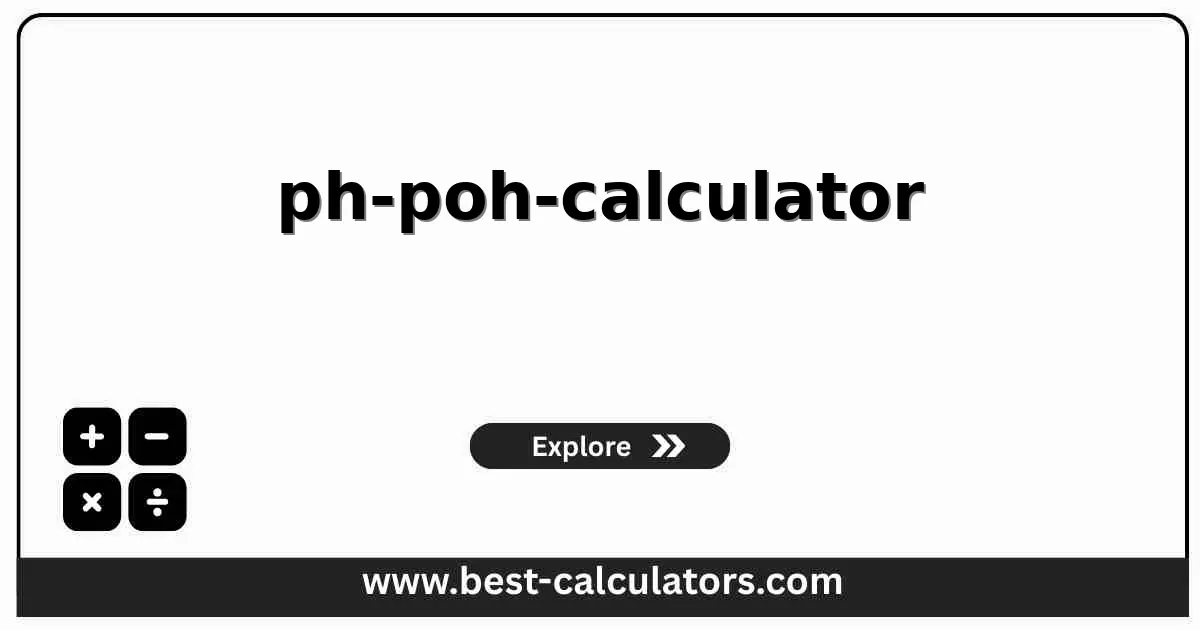pH & pOH Calculator
Calculate pH, pOH, [H+], and [OH-].
Enter One Known Value
Results
What is pH & pOH?
pH measures the acidity or basicity of a solution on a logarithmic scale from 0-14. pOH measures hydroxide ion concentration and is inversely related to pH.
These values help chemists quantify acid-base properties and predict chemical behavior in solutions.
To calculate molarity for these calculations, use our Mole & Molar Mass Calculator.
To dilute acids or bases to a specific concentration, try our Dilution Formula Calculator.
Formulas
- pH = -log[H+]
- pOH = -log[OH-]
- pH + pOH = 14 (at 25°C)
- [H+] = 10^(-pH)
- [OH-] = 10^(-pOH)
- [H+] * [OH-] = 10^-14
Key Concepts
- • Logarithmic Scale: Each pH unit represents a 10-fold change in [H+]. pH 4 is 10× more acidic than pH 5.
- • Water Equilibrium: At 25°C, pH + pOH always equals 14. This is based on the autoionization of water.
- • Ion Product: [H+] × [OH-] = 1.0 × 10⁻¹⁴ at 25°C (Kw, the water ionization constant).
- • Real Applications: Pool maintenance, soil testing, aquarium care, food chemistry, and medical diagnostics.
- • Buffer Solutions: Mixtures that resist pH changes when acids/bases are added. Essential for biological systems.
- • Common pH Values: Stomach acid: 1-2. Lemon juice: 2. Coffee: 5. Blood: 7.4. Seawater: 8. Bleach: 12.
How to Use This Calculator
Select Input Type
Choose pH, pOH, [H+], or [OH-].
Enter Value
Input the known value.
Get All Values
View pH, pOH, [H+], and [OH-].
Benefits of Using This Calculator
- • Complete Solution: Calculate all 4 values from any single input.
- • Lab Preparation: Quickly verify solution concentrations.
- • Homework Helper: Solve acid-base chemistry problems instantly.
pH Scale Examples
- • Acidic (pH < 7): Lemon juice, vinegar, battery acid.
- • Neutral (pH = 7): Pure water.
- • Basic (pH > 7): Soap, bleach, baking soda solution.

Frequently Asked Questions (FAQ)
Q: What is pH?
A: pH is a measure of the acidity or alkalinity of a solution. It is the negative logarithm of the hydrogen ion concentration: pH = -log[H+].
Q: What is the relationship between pH and pOH?
A: In aqueous solutions at 25°C, pH + pOH = 14. As pH increases, pOH decreases.
Q: What is a neutral pH?
A: A pH of 7 is considered neutral. Values below 7 are acidic, and values above 7 are basic (alkaline).